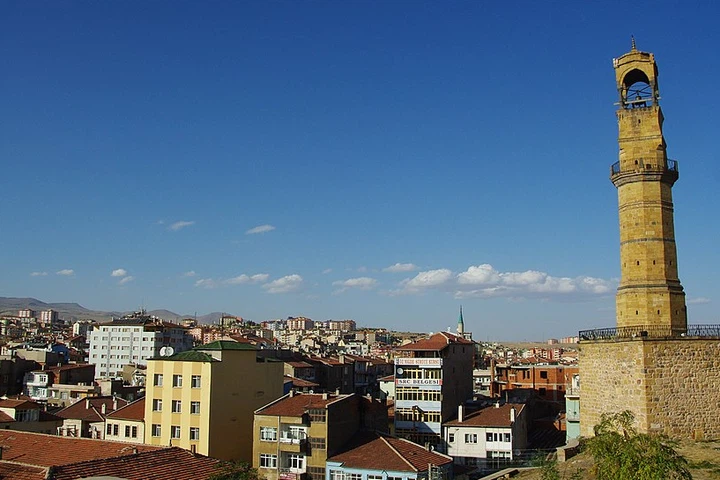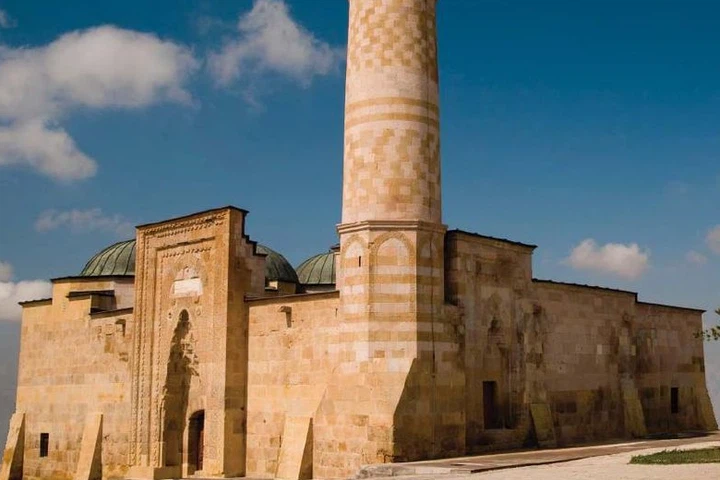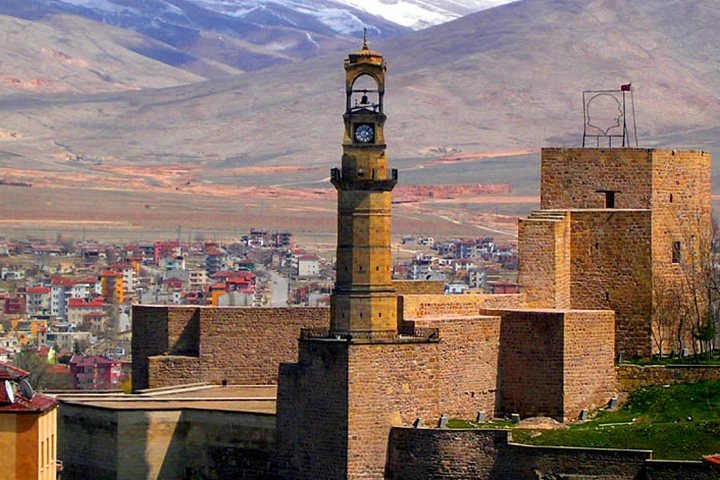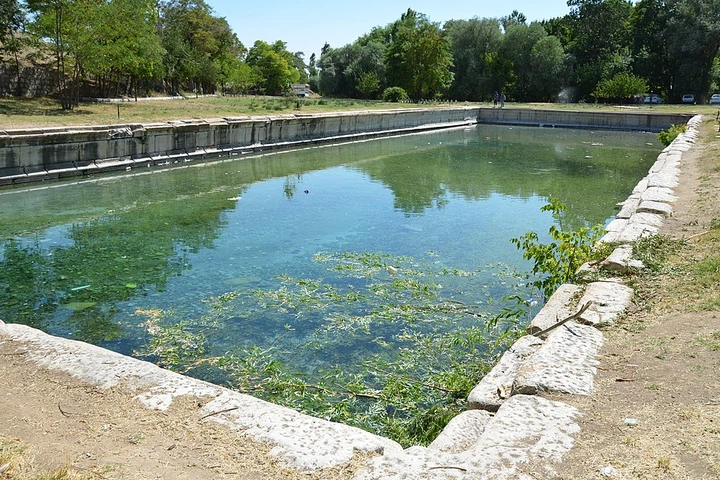Niğde

After buying a Niğde bus ticket, you can go on an unforgettable journey to the Central Anatolia Region. Located in the Middle Kızılırmak section, the city has a very rich history. Known as Nakita or Nahita, the city dates back to BC. It has a history dating back to the 600s. The city, which was under the rule of the Hittites, Assyrians, Phrygians, Medes, Persians, Romans, Byzantines and the Ottoman Empire, has a deep-rooted history.
It has been used as a settlement uninterruptedly since the Paleolithic Age. The excavations of Altunhisar Pınarbaşı Mound, Bahçeli Köşk Mound and Divaralı Mound in the region have revealed the history of the city. It is known that settled life in Nevşehir dates back to approximately 10 thousand years ago. Inscriptions from the Hittite and Assyrian periods show that the Hittites ruled for about a thousand years. Assyrians took the sovereignty after the Hittites and then passed to the Phrygians.
Nigde Attractions
Located in Central Anatolia, Cappadocia region, the city is suitable for visits for different purposes. It stands out with its natural beauties, ruins and cultural tourism. The city, which is available to visit in all four seasons, has a very rich history. Aladağlar National Park, where people show great interest for trekking, is one of the most ideal locations in Niğde to spend time in nature. It is possible to relax and find peace in the healing waters of the city, which is also famous for its hot springs. It may be enough to set aside 2 days to create an efficient travel plan.

Aladdin Hill
Alaaddin Hill, one of the highest areas of Niğde, is located in the east of the city. There is an inner castle on the north of the hill. In the southern part, there are Alaaddin Mosque, Clock Tower and Rahmaniye Mosque. The hill, which has a large park area, attracts great attention from visitors. After the archaeological studies carried out in 1960, ceramic remains were found in the region. The ruins show that it was used actively during the Phrygian, Roman, Seljuk, Byzantine and Ottoman periods. The hill, which is among the places to visit in Niğde, can be visited.
The Rahmaniye Mosque, built in 1747 by Abdurrahman Pasha, has a rectangular plan. Although it has been repaired over time, it preserves its originality to a large extent. Yellow trachyte stone was used on the minaret and walls of Cain. The most striking place in its architecture is the decorations on the mihrab. Baroque style is seen in the decorations bearing traces of the period.
Nigde Museum
The museum, located in the city center, can be visited to have a grasp of the history of the region. It becomes possible to shed light on the past thanks to the museum where the remains from very old times are exhibited. Many different artifacts from the Paleolithic Age to the present are exhibited. The artifacts obtained as a result of the excavations carried out in and around the region are kept under the auspices of the museum for protection. The museum, which started to serve in Akmedrese, has changed place over time. There are six rooms in chronological order. Artifacts from a different period are exhibited in each room.
In the first hall, there are works from the Neolithic Age, in the second hall, the Old Bronze Age, in the third hall, the Hittite period, and in the fourth hall there are artifacts from the Hellenistic, Byzantine and Roman periods. While mummies are exhibited in the fifth hall, there are ethnographic artifacts belonging to the region in the sixth hall. The most important work of the museum; It is a Hittite Storm God artifact from the Nahita Kingdom. The museum, which attracts visitors, contributes to the history of the region. It is one of the must-see places to see and get to know the civilizations that lived in Anatolian lands.

Nigde Castle
It is a historical castle located within the borders of the old Niğde city of Niğde province. Although the exact date of its construction is not known, with the findings obtained from the stones at its foundation, it was found in the BC. It is thought that its foundations were laid in the 8th century. The second part of Niğde Castle, which is thought to have been built in the 10th century, is thought to have been used for defensive purposes because it surrounds the hill where the Old Niğde city is located. The castle consists of two parts as the inner castle and the outer castle. This castle, made entirely of stone, has two entrances. The high and thick walls have been destroyed and destroyed over time. The castle, which was maintained and restored during the Ottoman period; It continued to be important until the time of the Anatolian Seljuks such as Kılıçarslan and Alaeddin Keykubat, and it started to be used as a prison in the Republican period. It was converted into a clock tower by Ziya Pasha in 1866. The castle can be visited by going to the center via Niğde Bus Terminal.
Gumusler Monastery
Located in Gümüşler Town, Gümüler Monastery is one of the strongest structures in the Cappadocia region. It is a large monastery, which has been very well preserved until today. The exact date of construction of the monastery, which was carved into a large rock, is not known. During the Ottoman period, non-Muslim people living in the region used it for worship. The monastery, which was built in accordance with the closed cross plan, is entered in the courtyard. The motifs and frescoes found in the building It reflects moisture very well. The fresco of the Virgin Mary, located in the Gümüşler Monastery, is the first smile motif in the world. The monastery, which is important in history in different ways, attracts great attention from tourists in Niğde. The frescoes, which include different scenes such as depictions of the Virgin Mary, the birth of Jesus, the apostles and angels, are very important. Niğde should be added to the places to be visited after buying a bus ticket.
Kosk Höyük
Köşk Mound, located in the Bor district of Niğde and approximately 17 km from the city center, is 80 meters in diameter and 15 meters high. Findings discovered during archaeological excavations are exhibited in the Niğde Museum. This archaeological mound It is thought to date back to 6000 years. Among other findings in the museum, BC. A model of a Chalcolithic house thought to have been built in 4883 is also on display. Three different building levels are observed in Neolithic and Chalcolithic settlements. From top to bottom, the first building belongs to the Chalcolithic, the second to the Neolithic, and the third to the Early Neolithic. In line with the discovered burials and human finds, it was determined that the dead were buried under their houses with their personal belongings, food and beverage containers. Since it is a place of historical importance, it is one of the most important locations for Niğde.

Roman Pool
The Roman Pool, located in the Bor district of Niğde, is one of the most important works of the period. The workmanship of the pool, which was built in the Roman Period, draws attention. It is a building that has gained fame as the pool where Cleopatra took a milk bath. Built during the Trojan and Hadrian periods, the pool has a rectangular plan. It is a pool made of marble and cut stones. The hot water in the pool reaches the ancient city of Tyana through the arch. The pool, which was buried under the ground after the Roman Period, was unearthed during the works carried out in 1960. The artifacts unearthed there during the works are exhibited in the Niğde Museum. Since there are trees and greenery around the pool, it is frequently used by the local people for activities such as hiking and picnics. It is one of the historical buildings among the places to visit in Niğde.
Ciftehan Thermal Springs
While Niğde fascinates with its historical past, it also attracts the attention of visitors with its healing waters. Due to the presence of hot water resources in the region, thermal tourism is carried out. They are clear waters that are used both for bathing and as drinking water. In the hot spring waters, which are very rich in minerals; sulfate, calcium, chloride and sodium. It is one of the regions that are flooded with visitors every season due to its goodness for various ailments and diseases. It is possible to pass to Çiftehan Town via Niğde Bus Terminal.
